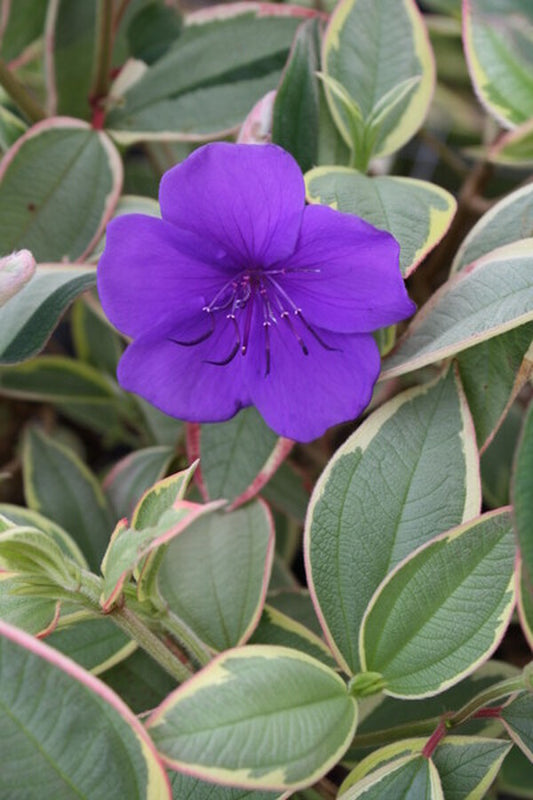Tibouchina species grow as trees or shrubs and have velvety leaves and large, attractive, purple, red, or white butterfly-attracting flowers. Tibouchina urvilleana performs quite well as a container plant.
-
Tibouchina urvilleana 'Variegata'
Item #: 6326
Zones: 8a to 10b, at least
Dormancy: Winter
Height: 24" tall
Culture: Sun to Part Sun
Origin: South America
Pot Size: 3.5" pot (24 fl. oz/0.7 L)
Regular price $25.00Regular priceUnit price per
More Information About Tibouchina
The genus Tibouchina is in the primarily tropical plant family, Melastomataceae. Due to its latitudinal handicap, we do not grow many members of this family in temperate gardens other than Rhexia and Melastoma. There are roughly 350 species of tibouchina whose native habitat extends from Mexico south to Argentina. The center of tibouchina diversity is in southeastern Brazil.
In tropical climates outside of its native range, tibouchina has a reputation of being quite invasive, but that is certainly not a problem here in the Southeast US. Tibouchina species grow as trees or shrubs and have velvety leaves and large, attractive, purple, red, or white butterfly attracting flowers. T. urvilleana is the only species we have found that is even marginally hardy for us. Here in Raleigh, it is a dieback perennial and needs to be planted in a protected site and mulched heavily in winter to keep it alive. North of us, T. urvilleana performs quite well as a container plant that can be moved indoors in winter.
Tibouchina (Glory Bush) Growing Conditions
Glory bush prefers full sun and rich, well-drained soil with a slightly acid pH, but it is adaptable to a wide range of conditions. It will produce purple flowers continually, starting in summer, and benefits from periodic pinching to improve the branching and shape.


